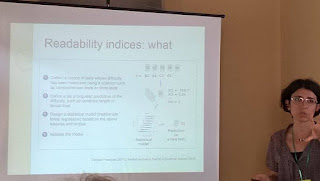Experience from public blogging to public appearance
Her melanoma story
''Mole,
melanoma stage 1B, September 12, excision
Found a tumour under my skin, 15 cm from org. mole, May 14, excision June 14,
and sept 14
Dec
14, first control CT, progression to liver, lymph nodes and soft tissue.
Dec.14.- Stage
IV
Jan
15, several lung metastasis.
Feb
15, enrolled in phase 1/ 2 study with
ipilimumab and UV1 vaccine
June
15, stopped study due to anaphylactic chock, partial remission
June
16, stable disease..''
In Jan 2015
''Started
a secret group on Facebook
Texting
and calling closest friends and family took too much energy
Everyone
got same info
Enjoy
being with other people without using time to update them
Never
blogged or wrote anything before
A lot
was about me, myself and I..''
Why go public /Why do patient advocacy?
''Passion
Pay
it forward attitude
Satisfying
to learn that people have acted on my advise to check moles
Patient
advocacy take away focus from me, myself and I
Deep
down selfish wish to be prepared if progression''
Thanks to Kari Anne to share with us her story
Alberto Piras
Use the internet to build tailored health interventions
-use a magic potions for children
-use of sounds
Gamification of health care, e.g. Super Power , ReMission Video Game -for cancer patients , (children during administration of treatment)
- gamification is at the beginning of the development
- it works with children and young adults
- with old adults/not so used to play games-not successful
- can be used both in treatment but also in prevention
- presently SuperPower games are used only within treatments of cancer children, second phase is prepared to convince children to follow the treatment;
- focus, motivation, creativity, competitive
Bettina Ryll
Antonella Romanini
Best of Melanoma - ASCO2016
-response to pembro is as durable as the one in ipi
- no difference in schedule (2 or 3 weeks)
-safety profile better for pembro than ipi (obviously)
-OS at 3 years is 45% for naive patients (keynote 001)
-uveal excluded-
-different subgroups -no big difference in effcacy at different doses
-first line treatment
-pts stopping pembro after complete response: 89 % stay in CR (complete response)
pembro + ipi
- toxicity
similar with Opdivo plus Ipi
-response
independent of PDL1 status-
- also PDL1-negative patients respond
- 153 patients (is a Phase1 expansion cohort)
- high overall
survival at 6 months- 93%; 87% patients received this first-line
Keynote 029- doses 1 mg ipi and 2 mg pembro/kg, well tolerated, no treatment related deaths
ORR 57%
OS 93%
98% of patients remain in response
Longer follow up is needed
Updated of Checkmate 067, Ipi +nivo vs ipi vs nivo
Update on Combi D (dabrafenib +trametinib vs dabrafenib)
D+T > D mono
patients with high mutational load and LDH normal -respond better!
median OS: 25 months vs 19 months
60% OS combi D+T at 3 years
ORR 69 combinvs 53% dabra alone
crossover allowed
patients with high LDH respond as well
MEK inhibitor (binimetinib) -for NRAS patients
- groups that received prior immuno responded better than the ones did not;
- not spectacular data, but there is some benefit: ORR 16% ; median duration of the response 11,1 months
How to treat patients with Braf positive
Ribas - immuno first options - use your own T cells and train them to fight cancer-long lasting response to PD1 blocade
Flaherty - Combi Braf+Mek first, because median OS normal 17 months; for patients with elevated LDH, PFS is only 5 months
''Take home messages'' by Bettina Ryll
- PD1
works better than Ipi (OS,
PFS, side effects)
- Tumours
expressing PDL1 respond better to PD1 than tumours without PDL1 expression
however, tumours
without PDL1, still respond to PD1!
- PD1
plus IPI works better than PD1 (OS, PFS) but comes with severe side effects.
- PDL1 expression of the tumour does
not seem to play a role.
- Patients with high PDL1 seem to do equally well on Nivo and Nivo plus
Ipi in
terms of PFS but not as ORR
- BRAF
plus MEK inhibitor better than BRAF (let alone) inhibitor, very durable
results for subgroups of patients- equal if not superior to PD1
- NRAS
mutant patients with prior immune therapy derive some benefit from MEK
inhibitor
- We
might have to re-think the ‘targeted therapy first’ strategy for patients with
fast-growing BRAF positive tumours
- The combination of Dabrafenib + Trametinib + anti-PD1 is something to watch out for!
OS- Overall Survival
ORR-Objective Response Rate
PFS- Progression Free Survival
















